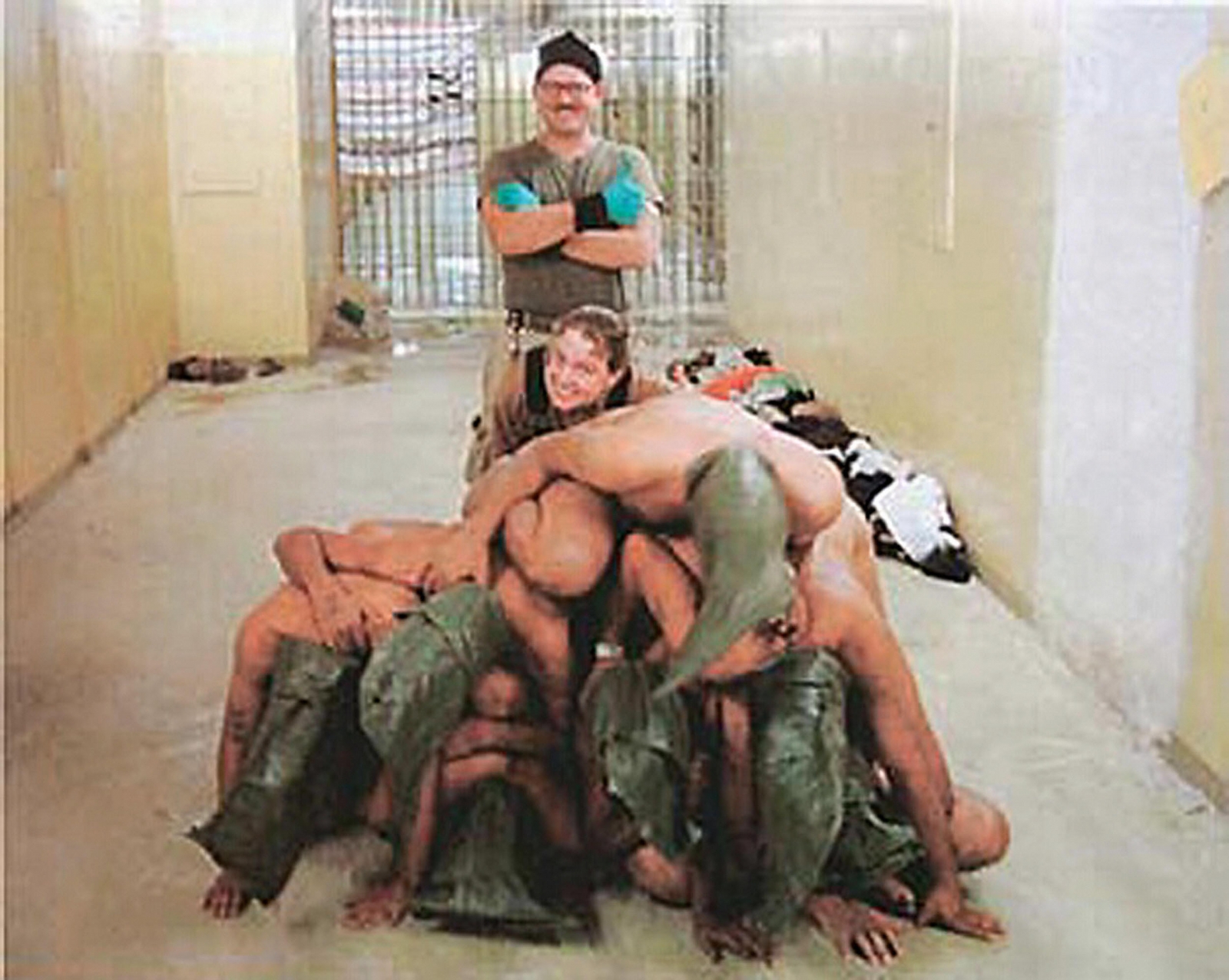Obama Withholding 2,100 Iraq and Afghanistan
اوباما 2،100 عکس از شکنجه عراقی ها و
Torture Photos 'Worse than Abu Ghraib'
افغانستانی ها'بدتر از زندان ابوغریب ' را قایم کرده است
http://www.ibtimes.co.uk/obama-administration-ordered-explain-withholding-2100-iraq-afghanistan-torture-photos-hold-1471251
ترجمه از : پیمان پایدار
ترجمه از : پیمان پایدار
 By Ewan Palmer
By Ewan Palmer
The Obama Administration has been given a December deadline to explain
why it has withheld more than 2,000 graphic images depicting Iraqi and Afghanistan detainees being tortured by the US military.
به دولت اوباما بگونه ضربالاجل تا دسامبر فرصت داده شده است که توضیح دهد چرا
بیش از 2000 تصاویر گرافیکی زندانیان عراقی و افغانستان را که توسط ارتش ایالات متحده
شکنجه شده اند را نگه شده است.
A federal judge has ordered the US government to explain, one photograph
at a time, why it blocked the images from being released to the public.
یک قاضی فدرال دولت آمریکا دستور داده است تا دولت ، عکس به عکس ، توضیح دهد چرا این تصاویر
از انتشار برای عموم مردم مسدود شده است.
In addition to the photographs of hooded, naked and abused prisoners inside the infamous Abu Ghraib prison in Iraq, which caused global outrage during the George W Bush era in 2004, a further 2,100 images showing possibly even more disturbing examples of torture and humiliation could also be released.
علاوه بر عکسهائی از زندانیان باشلق دار، برهنه و مورد آزار قرار گرفته شده در داخل زندان بد نام ابوغریب عراق، که
در دوران جورج بوش در سال 2004 باعث خشم جهانی گردید، 2100 تصاویر دیگر که احتمالا نمونه نگران کننده تری از شکنجه و تحقیر آمیز میباشند نیز می تواند منتشر گردد .
Federal Judge Alvin Hellerstein has given the US Justice Department until 12 December to give a rational explanation why each individual photograph has been withheld from the public.
قاضی فدرال آلوین هلرشتاین وزارت دادگستری آمریکا تا 12 دسامبر فرصت داده تا یک توضیح منطقی که چرا هر یک از عکس فردی از چشم مردم لاپوشانی شده است.
After Hellerstein has heard the reasoning from the government, he will decide how many will be released, if any at all.
پس از اینکه هلرشتاین استدلال های دولت را شنید، او تصمیم خواهد گرفت چند تا از آنها میتوانند منتشر شوند,اگر اصلا بشوند
In 2009, President Barack Obama said the reasoning for blocking the release of the images was on the grounds they would "further inflame anti-American opinion" and "put our troops in greater danger".
در سال 2009، باراک اوباما رئیس جمهور دلایل جلوگیری انتشار تصاویر را چنین توصیف کرد: "آنها بیشتر افکار ضد آمریکائی را تحریک میکنند" و "سربازان ما در معرض خطر بیشتر" قرار خواهند گرفت.
Two former US secretaries of defense, Robert Gates in 2009 and Leon Panetta in 2012, also maintained the disclosure of the images would place US troops in Iraq and Afghanistan lives at risk.
دو وزیر سابق دفاع آمریکا، رابرت گیتس در سال 2009 و لئون پانتا در سال 2012، نیز حفظ افشای تصاویر عراق و افغانستان را مرتبط با در معرض خطر قرار گرفتن سربازان آمریکا خواندند .
The US military returned to Iraq this year as part of the ongoing battle against Isis (Islamic State), prompting further fears about the repercussion the release of the images might hold.
ارتش آمریکا در سال جاری به عراق به عنوان بخشی از مبارزه علیه داعش (دولت اسلامی) بازگشت، انتشار عکسها میتواند باعث ترس بیشتر در مورد عواقب آن داشته باشد .
Marcellene Hearn, an attorney for the American Civil Liberties Union (ACLU), said it is important that the US government disclose the actions of the military for transparency purposes.
مارسلن هرن، وکیل اتحادیه آزادی های مدنی آمریکا (ای سی ال یو)، گفت: این مهم است که دولت ایالات متحده اقدامات نظامیان را برای مقاصد شفافیت آشکار سازد.
"The American people are entitled to know what took place in US detention centres," she said.
او گفت: "مردم آمریکا حق دارند بدانند که در بازداشتگاه های ایالات متحده در زمان جنگ چه گذشته است "
"And it would be completely backwards to suppress images of government misconduct on the grounds that they are too powerful to be disclosed when it is often disclosure, accountability and ensuing reforms that prevent misconduct from recurrin"
و این امر (مخفی نگه داشتن عکسها) بعنوان رفتار غلط دولت کاملا عقب گرایانه است بر این اساس که آنها بیش از حد قوی میباشند برای به افشا قرار دادن چرا که اغلب افشای آنها، پاسخگویی و متعاقب آن اصلاحات است که میتواند از سوء رفتار های بعدی جلوگیری کنند."
و این امر (مخفی نگه داشتن عکسها) بعنوان رفتار غلط دولت کاملا عقب گرایانه است بر این اساس که آنها بیش از حد قوی میباشند برای به افشا قرار دادن چرا که اغلب افشای آنها، پاسخگویی و متعاقب آن اصلاحات است که میتواند از سوء رفتار های بعدی جلوگیری کنند."

No comments:
Post a Comment